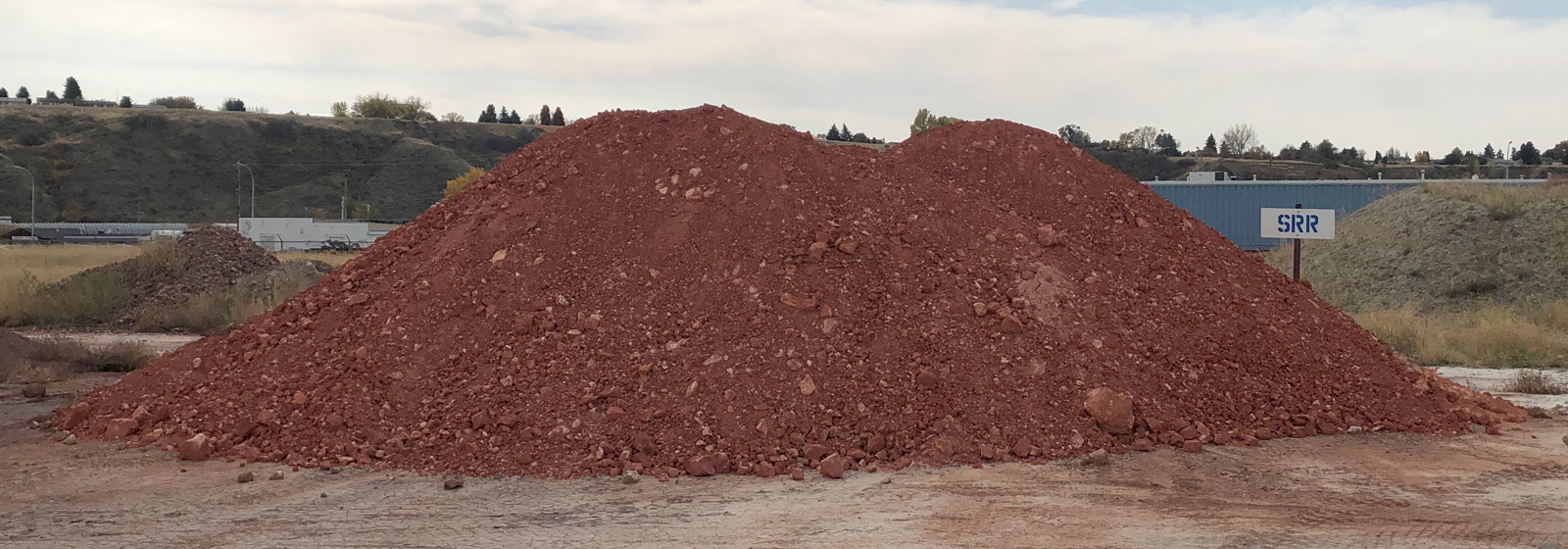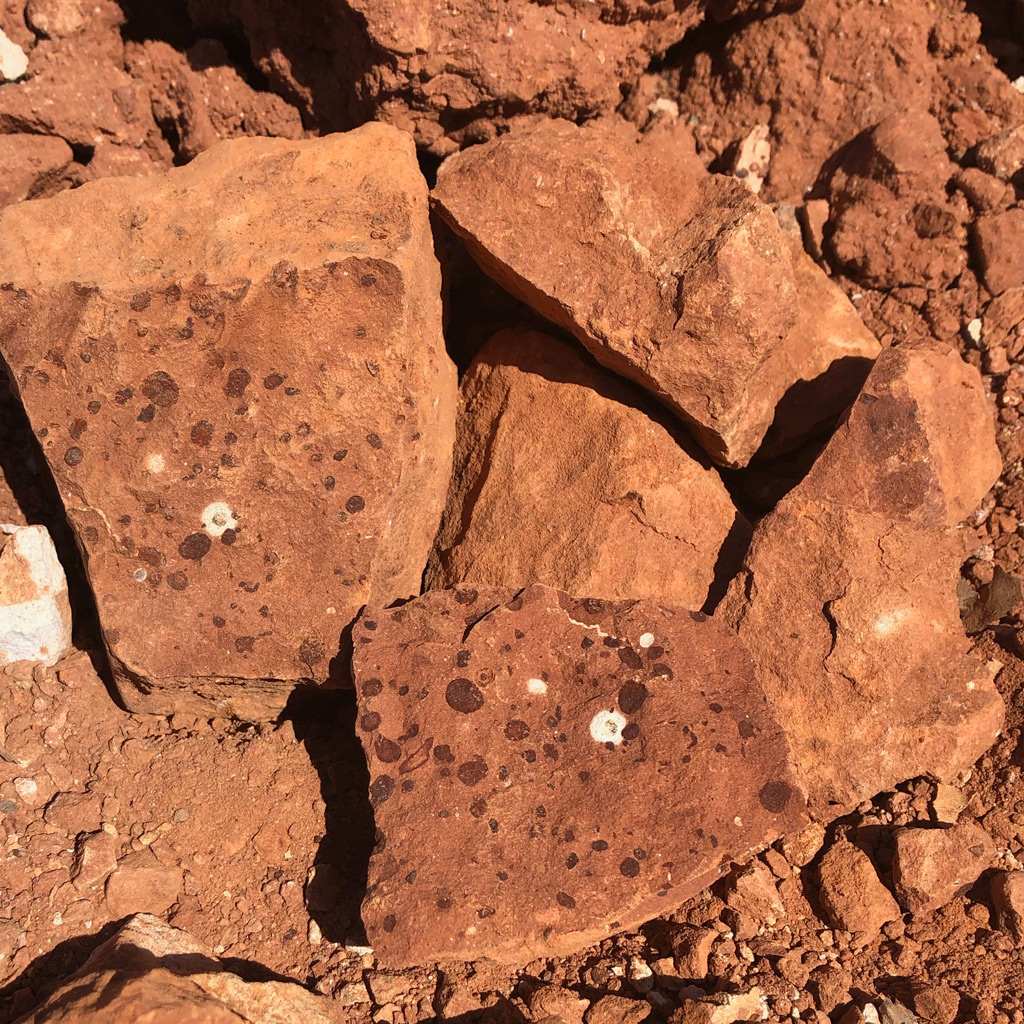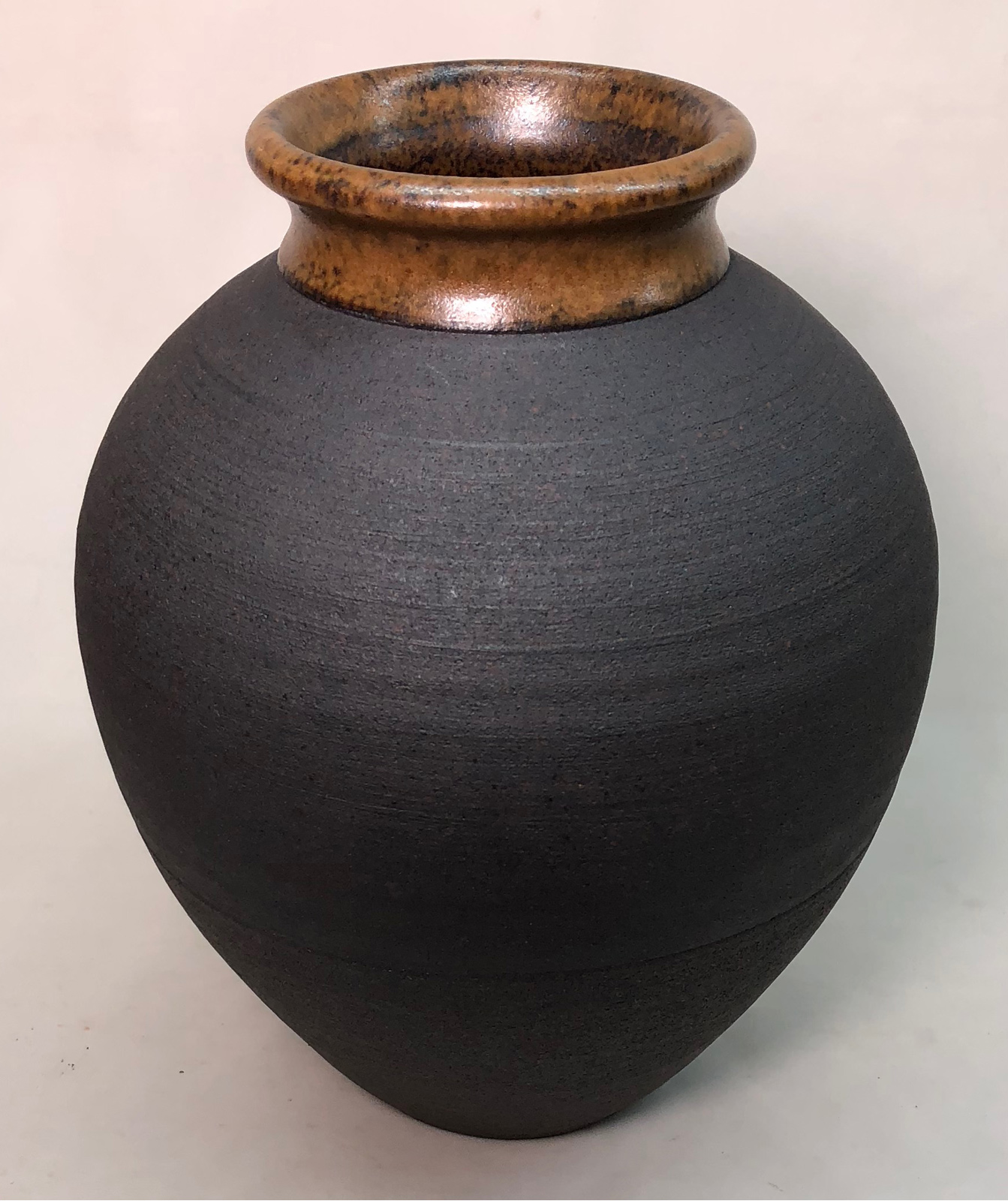Fire-Red
Description
A high iron, slightly sandy, medium to low plasticity, refractory, deep red burning raw clay material. Ideal as a source of iron in high-fire iron-red reduction bodies (it stains bodies and sources iron particulates that blossom in reduction to produce speckle).
Fire-Red is a blend of three high iron clays. About half of the mix is a refractory low plasticity bright red material mined in St. Rose, Manitoba. One third is a medium plastic maroon clay from Montana (M2). The remainder is a bentonitic, pyritic brown clay from Saskatchewan (A1).
Fire-Red is an excellent addition to high temperature clay bodies to darken their fired color. It will not increase plasticity (and therefore drying issues) and it will not flux the body (making it too vitreous). It contains natural iron pyrite particles that impart attractive speckling in reduction firing.
Fire-Red is the basis for the red colors of Plainsman H440 and H440G and of the brown in H443.
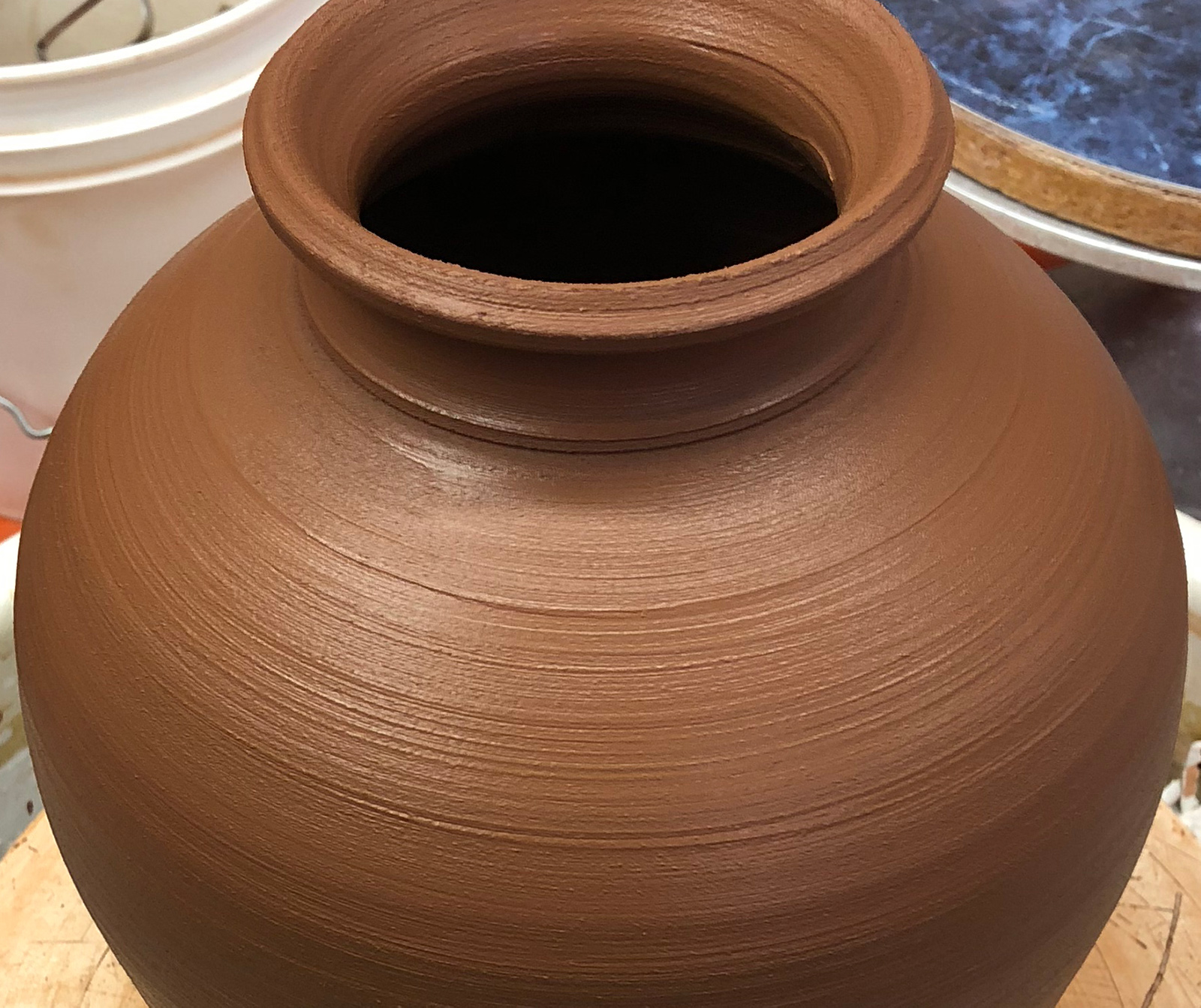
Fire-Red thrown surface. 10 inch bellied vase. Thrown with difficulty since the plasticity of this material is fairly low.
Substitutes For
Newman Red clay.
Process Properties
Although this material fires to deep and even metallic colors when used alone in cone 10R firings, it will not fit glazes. They will shiver off. Besides, it is not plastic enough to be workable by most people. Use this in a body in combination with plastic clays (to produce workability) and with feldspar (to vitrify and reduce thermal expansion).
Firing
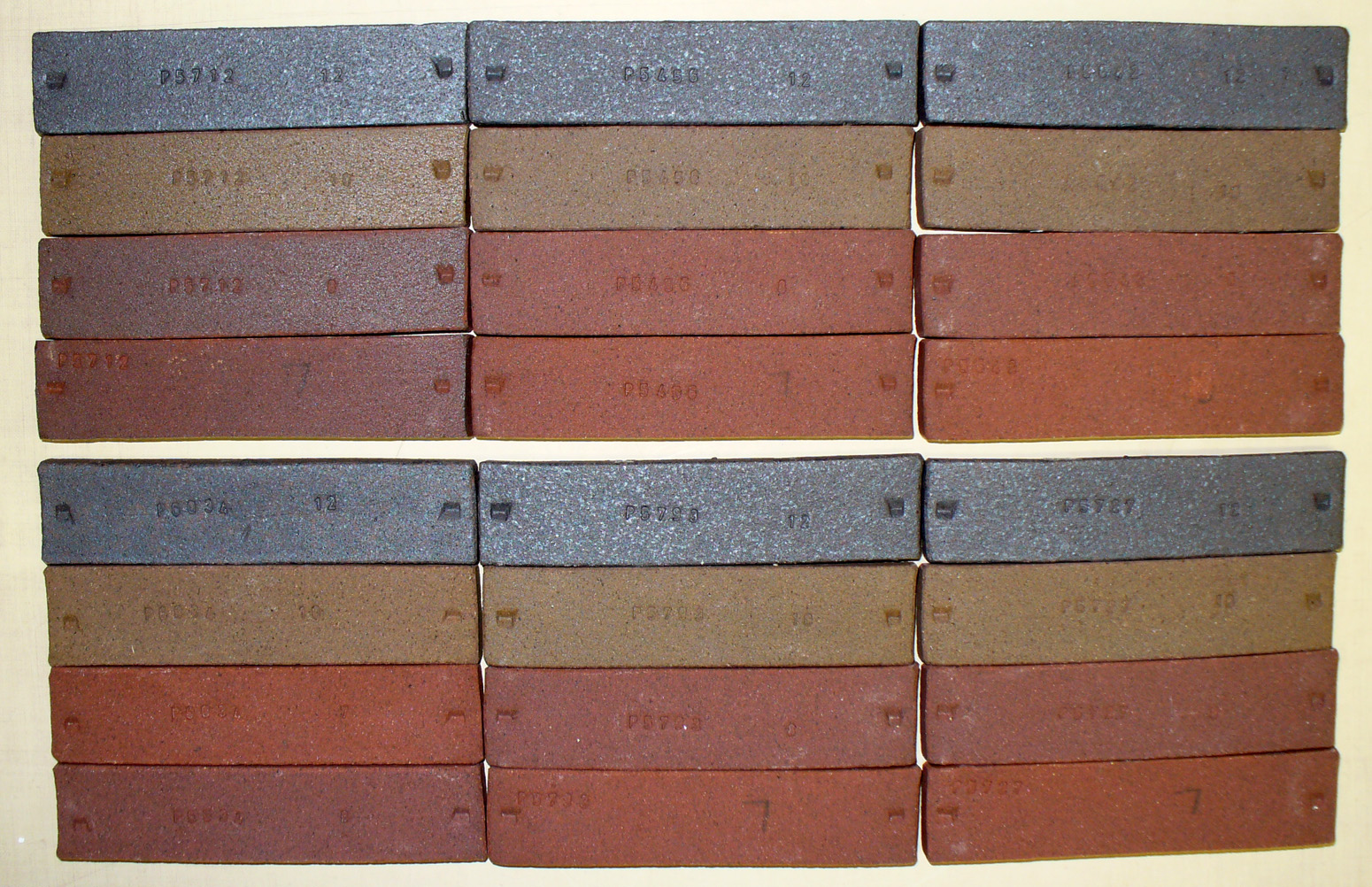
These are six different runs of Fire-Red. The top bar on each is cone 10R (almost firing black), the next one down is 10 oxidation. The third one down is cone 8 (where the red color is holding).
Fire-Red is refractory compared to other high-iron raw materials. It fires deep red in oxidation (cone 8) and metallic chocolate to black in reduction. Although not a fireclay, this material is refractory enough to withstand cone 10 and still be relatively porous.
To achieve classic iron reduction variegation in bodies using this material it is necessary that they do not fully vitrify at the target temperature. Typically 2-3% porosity or higher will give the most attractive red coloration (on such bodies use caution for functional ware, glazes should be fitted well with a minimum of exposed unglazed clay).
Glazing
The dominant contribution of Fire-Red is fired speckle and dark iron color, especially in reduction firing. It works well with glazes that enhance the speckle and those into which the body iron can diffuse.
Physical Properties
Drying Shrinkage: 5.5-6.5% Dry Strength: n/a Drying Factor: C130
Sieve Analysis (Tyler mesh):
+48: 0.5-1.0% 48-65: 2.0-4.0 65-100: 3.0-5.0 100-150: 4.0-6.0 150-200: 5.0-7.0 200-325: 6.0-8.0
Fired Shrinkage:
Cone 6: 3.5-4.5 Cone 8: 4.0-5.0 Cone 10: 4.5-5.5 Cone 10R: 4.0-5.0
Fired Absorption:
Cone 6: 8.0-10.0 Cone 8: 6.5-8.5 Cone 10: 5.0-7.0 Cone 10R: 2.0-3.0
Chemical Analysis
BaO 0.3 CaO 0.5 K2O 1.1 MgO 0.6 Na2O 0.1 TiO2 0.9 Al2O3 15.4 P2O5 0.2 SiO2 66.3 Fe2O3 6.9 MnO 0.1 LOI 7.6%
Gallery
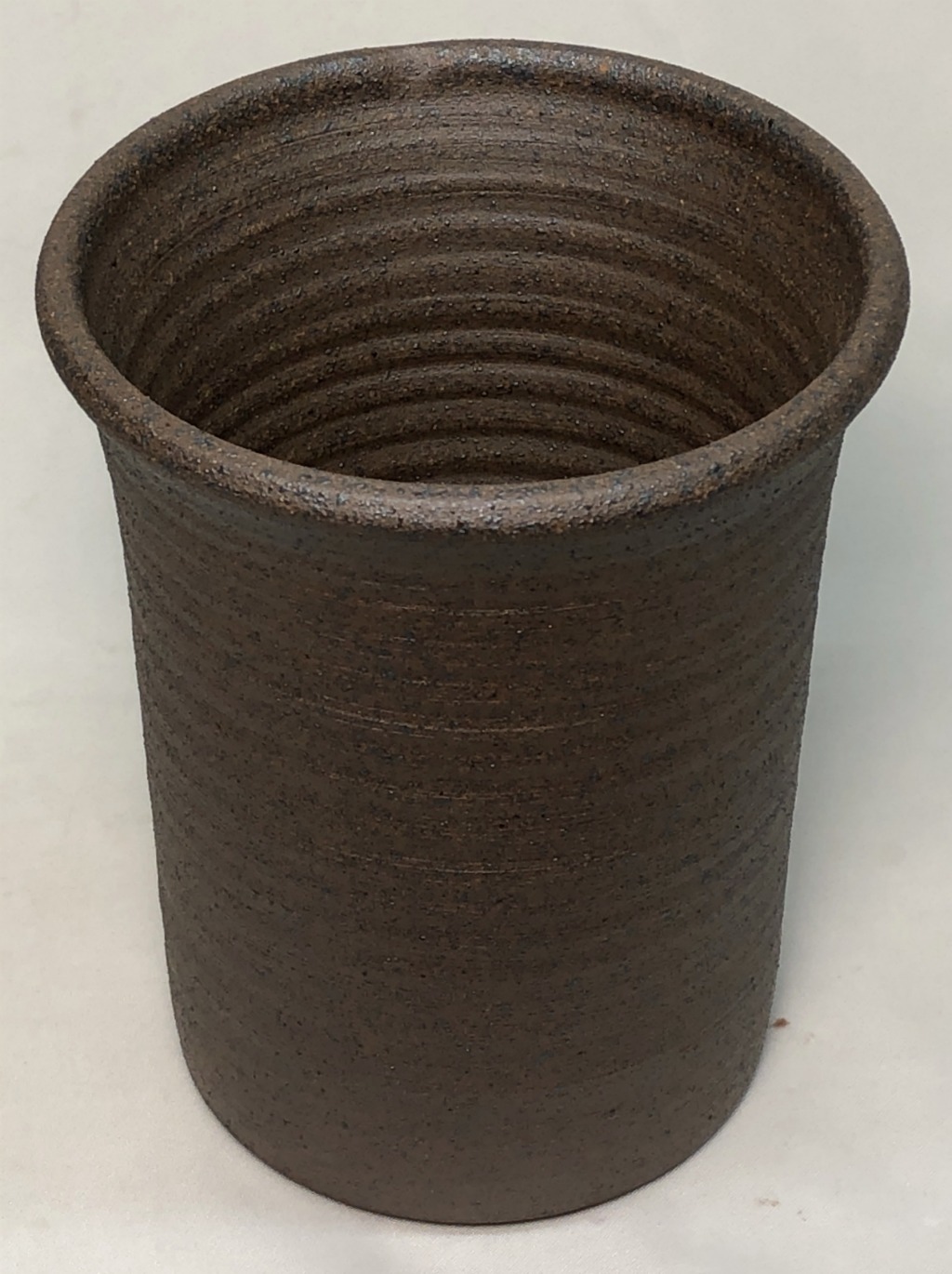
This cone 10R very smooth and plastic body is made from 42.5% Fire-Red, 42.5% ball clay and 15% feldspar. It fires quite vitreous (1.3% porosity) and has a deep, almost metallic color. The surface is covered by thousands of tiny iron eruptions, these would bleed through an over glaze.

How to give Laguna B-Mix some life? Make a 50:50 mix of Plainsman A1 and Plainsman St. Rose Red, mix it as a slurry, dewater to plastic form and then wedge it in to the B-Mix (left piece has 10%, the other 20%). The bar in front shows the pure 50:50 mix. The A1 supplies most of the speckle, the St Rose imparts the color.
